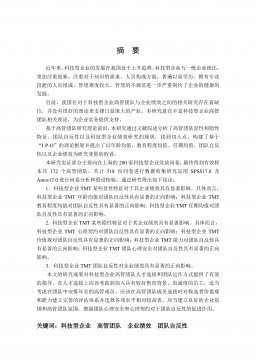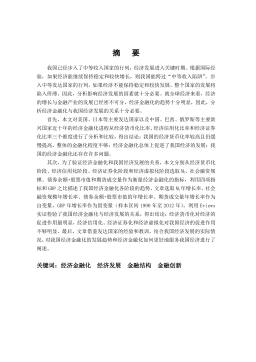USST_Arts_112490762 控股股东卷入、两权分离与项目投资决策风险偏好差异的研究
VIP免费
摘 要
公司治理研究是一个全球性课题,也是近年来倍受热议的经济学和金融学研
究领域的一部分,其中作为公司治理基础的股权结构当之无愧成为热点,近几十
年来英美国家对于应当怎样进行公司股权结构的设置以增进公司和整个经济的绩
效进行着广泛的讨论。我国对股权结构和公司绩效的研究始于 80 年代末,伴随着
国有企业的改革而逐渐引起重视。国内学者对于股权结构对企业价值影响的研究
着眼于不同的角度,且取得不少理论成果,但是研究大部分还是直接将股权结构
与公司业绩作为因果关系进行回归分析,而且研究方法上还存在很大问题,实证
结果也没有得出一致的结论。不管是从理论上还是从实证上都对股权结构的研究
仅仅是一个开始,有待深人研究。
投资决策对企业的战略发展起到决定性作用,而众所周知的委托代理问题是
如何左右企业的投资决策行为则成为现代公司治理乃至财务研究领域的一大模
块。企业的投资决策权是由控股股东控制,而控股股东结构和行为偏好的不同将
会对投资决策产生重大影响以致关乎企业存亡,故股权结构对企业长期稳定发展
起到尤为关键的作用。我国经济发展和经济体制的独特性促成了我国上市公司高
度集中的股权结构。高度集中的股权结构赋予控股股东远大于他们自身应该行使
的权利,而作为理性经济人,控股股东在自身利益最大化和公司利益最大化之间
难免会选前者,如果两者相冲突将使企业走入困境。另外,由于我国上市公司控
股股东多为政府,股东与经理人之间的委托代理矛盾深化,由于缺乏约束性,使
得企业出现投资不足或投资过剩等非效率投资现象,严重阻碍企业发展。通过查
阅国内外文献,股权结构影响企业价值的观点已经得到广泛认可,但大部分研究
着眼于股权结构对企业业绩的直接作用关系,而忽略了作为“中间桥梁”企业投
资行为。综合各方面问题考虑,本文试图以我国独特的经济和制度为背景,立足
于股权结构即控股股东卷入、现金流权与控制权分离度对企业项目投资风险偏好
的影响,以及项目投资风险偏好对企业业绩的影响。此研究既可以丰富控股股东
对企业投资影响的研究;亦可以给近年来我国上市公司非效率投资提供一个新的
出发点—企业股权结构影响。
本文首先在对国内外研究文献进行回顾的基础上,阐述了第二类委托代理问
题、股权结构对企业投资行为的影响,并对最终控制人性质、两权分离、投资风
险偏好与企业业绩进行了理论分析,并根据所提出的假设赋予他们量化指标。然
后根据我国的实际情况选择房地产行业作为研究样本,利用国泰安数据库和锐思
数据库所提供的上市公司数据,在控制了实际控制人类型、两职兼任、管理层持
股、独立董事比例、财务杠杆、盈利能力、上一期公司业绩、公司规模等相关变
量的情况下,结合理论分析提出假设,并建立回归模型来验证假设,从数据中真
实反映股权结构中最终控制人现金流卷入、两权分离与投资风险偏好的关系,得
出结论如下:一.最终控制人现金流卷入程度与投资风险偏好呈负相关关系;二.
两权偏离程度越高,投资风险偏好也就越高;三.投资风险偏好在一定程度上影响
企业业绩,决策者长期投资偏好风险较大的项目,对公司业绩会带来负面影响。
通过学习和借鉴国内外优秀文献成果,并将其带入我国独特的制度环境和处
于转型期的资本市场中,将投资决策加入股权结构对企业的间接影响中,理论分
析和数据模型检验控股股东、两权分离对公司投资决策的影响,有利于促进我国
资本市场迅速完善、健康迅速发展,且对于揭示现代公司治理当中存在的问题,
具有十分重要的现实意义,也是企业投资领域一个崭新的研究视角。
关键词:股权结构 现金流权 两权分离 投资风险偏好 企业价值
ABSTRACT
Corporate governance is not only a global issue, but also a hotly debated topic in
recent years, which is part of the economics and finance research, including as basis of
the ownership structure of corporate governance has become a hot-deserved. he
Anglo-American countries in recent decades have been dedicated themselves to the
research on what should be the company set the ownership structure in order to
enhance the performance of the company and the whole economy . Study on
ownership structure and corporate performance in China began in the late 1980s, and
soon received additional consideration along with the reform of State-owned
enterprises. Scholars for research focusing on the effects of ownership structure and
enterprise value different perspectives, and various theoretical accomplishments, but
most of those are direct causal relationship between ownership structure and corporate
performance regression analysis, there are big problems and research methods,
empirical result did not arrive at the same conclusion. On both the theory and the
empirical study on ownership structure is just a start, and subject to an in-depth
investigation.
Investment strategy played a decisive role in the development of the enterprise,
and the well-known principal-agent problem about how to have an impact on corporate
behavior of investment decisions has become a big block of modern corporate
governance as well as financial research. Enterprise investment decision-making power
is controlled by the controlling shareholder, while the structures of controlling
shareholder and preferences they select will have a significant impact on investment
decisions that relates to business survival , and it is the shareholding structure of the
long-term stable development of enterprises play a particularly crucial role.The unique
characteristics of China's economic development and economic institutions contributed
to the highly concentrated ownership structure of China's listed companies. Highly
concentrated ownership structure gives much greater than the controlling shareholders
should exercise their own right , and as a rational economic man , they will inevitably
choose the former one between maximizing their own interests and maximizing the
interests of the company,which will allow businesses into trouble if there is a conflict.
In addition, as most of the controlling shareholders of listed companies in China are
the Government, principal-agent conflicts between shareholders and managers has
been deepening.And due to the lack of binding, it allowed companies appear inefficient
investment behavior as under-investment or over-investment , which could be serious
obstacles to enterprise development. By reviewing the literature, point of ownership
structure has an effect on enterprise value point has been widely recognized,, but most
of the research focused on the direct effect of ownership structure and corporate
performance relationships while ignoring enterprise investment behavior which as a
"bridge" between ownership structure and enterprise value .Taking all issues into
account, this paper attempts to take our unique economic and institutional background,
based on the shareholding structure that is involved in controlling shareholders, the
impact of cash flow rights and control over separation of ownership and control project
investment risk appetite, investment risk preference and investment impact on
corporate performance. This research can enrich both study on effect of controlling
shareholder on business investment; may also be inefficient investment in Chinese
listed companies in recent years to provide a new starting point for new corporate
shareholding structure impacts.
Firstly on the basis of a review of domestic research literature, expounded the
principal-agent problem of the second kind, the impact of ownership structure on
corporate investment behaviour, and who ultimately control the nature of the
separation of ownership and investment risk appetite and corporate performance
conducted theoretical analysis and quantitative indicators based on the assumptions
given to them raised . Then according to my of reality select real estate industry as
research samples, uses listed company data provided by GTA database or RESSET
database, in the case of making some variables in control such as the actual controller
type ,two jobs concurrently , managerial ownership , the proportion of independent
directors, financial leverage, profit capacity, the results of the first phase , company
size and other relevant variables , the empirical analysis using regression models
controlling shareholder involvement , impact on listed companies to invest in risk
appetite separation of ownership , and then analyzes the investment risk preferences of
the enterprise affected the results .Then comes to the conclusions: Firstly, the higher
the degree of involvement of the controlling shareholder , the lower the listed
companies to invest in risk appetite ; Secondly, higher degree of deviation from
ownership and control , the higher the investment risk preference; Thirdly. investment
risk appetite in some the extent of the impact on corporate performance , policy makers
prefer risky long-term investment projects , the company will have a negative impact
on performance.
Through learning and reference both at home and abroad excellent literature
results, and brought it into our unique institutional environment in transition and
capital markets, investment decisions will be added to the indirect effects of corporate
ownership structure, the theoretical analysis and test data models controlling
shareholder study, the impact on the company's separation of ownership and
investment decisions, and promoting the rapid improvement of China's capital market,
the rapid development of health, and for revealing the existence of modern corporate
governance issue which has great practical significance, business investment is also a
new perspective.
Key words: Equity Structure ,Cash-flow Rights ,Separation of
Ownership and Control ,Investment Risk Preference ,Enterprise
Value
目 录
摘 要
ABSTRACT
第一章 绪 论............................................................................................................1
1.1 研究背景....................................................................................................1
1.2 研究意义....................................................................................................2
1.3 研究的方法与思路....................................................................................3
1.4 文章结构安排............................................................................................4
第二章 理论综述......................................................................................................5
2.1 第二类委托代理问题及相关研究综述....................................................5
2.1.1 第二类委托代理问题理论分析....................................................5
2.1.2 控股股东卷入及其量化指标........................................................6
2.1.3 两权分离及其量化指标................................................................9
2.2 企业投资决策风险偏好的研究概述......................................................10
2.2.1 第二类委托代理问题下的公司投资行为..................................10
2.2.2 我国上市公司的投资行为分析..................................................12
2.2.3 投资风险偏好及其度量指标......................................................13
2.3 股权结构下的公司绩效..........................................................................16
2.4 企业投资与公司价值..............................................................................17
第三章 构建模型....................................................................................................20
3.1 提出假设..................................................................................................20
3.1.1 控股股东卷入与投资风险偏好的关系......................................20
3.1.2 两权分离与投资风险偏好的关系..............................................21
3.1.3 投资风险偏好与公司业绩之间的关系......................................21
3.2 变量选择..................................................................................................22
3.2.1 自变量..........................................................................................22
3.2.2 因变量..........................................................................................22
3.2.3 控制变量......................................................................................22
3.3 数据来源及样本控制..............................................................................24
3.4 模型建立..................................................................................................25
3.4.1 控股股东卷入与投资风险偏好..................................................25
3.4.2 控制权和现金流权偏离与投资风险偏好..................................25
3.4.3 投资风险偏好与公司业绩..........................................................26
第四章 实证分析....................................................................................................27
4.1 描述性统计..............................................................................................27
4.2 控股股东卷入与投资风险偏好...............................................................28
4.3 控股股东两权分离与投资风险偏好.......................................................30
4.4 投资风险偏好与公司业绩.......................................................................32
第五章 稳健性测试................................................................................................34
5.1 稳健性测试...............................................................................................34
5.2 内生性讨论...............................................................................................35
第六章 研究结论、建议与局限............................................................................39
附录..........................................................................................................................40
参考文献..................................................................................................................50
在读期间公开发表的论文和承担科研项目及取得成果......................................55
致 谢......................................................................................................................56
摘要:
展开>>
收起<<
摘要公司治理研究是一个全球性课题,也是近年来倍受热议的经济学和金融学研究领域的一部分,其中作为公司治理基础的股权结构当之无愧成为热点,近几十年来英美国家对于应当怎样进行公司股权结构的设置以增进公司和整个经济的绩效进行着广泛的讨论。我国对股权结构和公司绩效的研究始于80年代末,伴随着国有企业的改革而逐渐引起重视。国内学者对于股权结构对企业价值影响的研究着眼于不同的角度,且取得不少理论成果,但是研究大部分还是直接将股权结构与公司业绩作为因果关系进行回归分析,而且研究方法上还存在很大问题,实证结果也没有得出一致的结论。不管是从理论上还是从实证上都对股权结构的研究仅仅是一个开始,有待深人研究。投资决策...
相关推荐
-
跨境电商商业计划书模版VIP免费
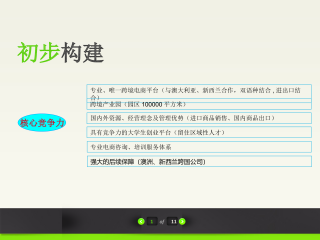
 2025-01-09 27
2025-01-09 27 -
跨境电商方案范文VIP免费
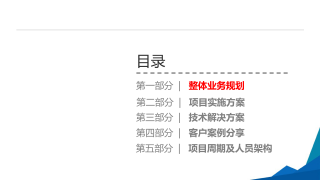
 2025-01-09 14
2025-01-09 14 -
创业计划书VIP免费
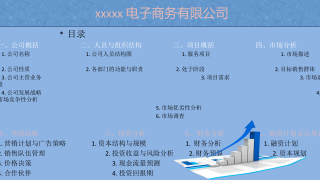
 2025-01-09 18
2025-01-09 18 -
xx生鲜APP计划书VIP免费

 2025-01-09 12
2025-01-09 12 -
跨境电商创业园商业计划书(盈利模式)VIP免费
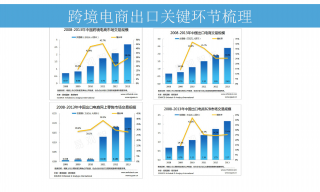
 2025-01-09 8
2025-01-09 8 -
跨境电商计划书VIP免费

 2025-01-09 13
2025-01-09 13 -
绿色食品电商平台项目计划书VIP免费

 2025-01-09 22
2025-01-09 22 -
农产品电子商务商业计划书VIP免费

 2025-01-09 9
2025-01-09 9 -
农村电商平台商业计划书VIP免费

 2025-01-09 13
2025-01-09 13 -
生鲜商城平台商业计划书VIP免费
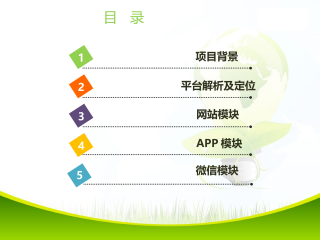
 2025-01-09 21
2025-01-09 21
作者:赵德峰
分类:高等教育资料
价格:15积分
属性:61 页
大小:563.78KB
格式:PDF
时间:2024-11-11


